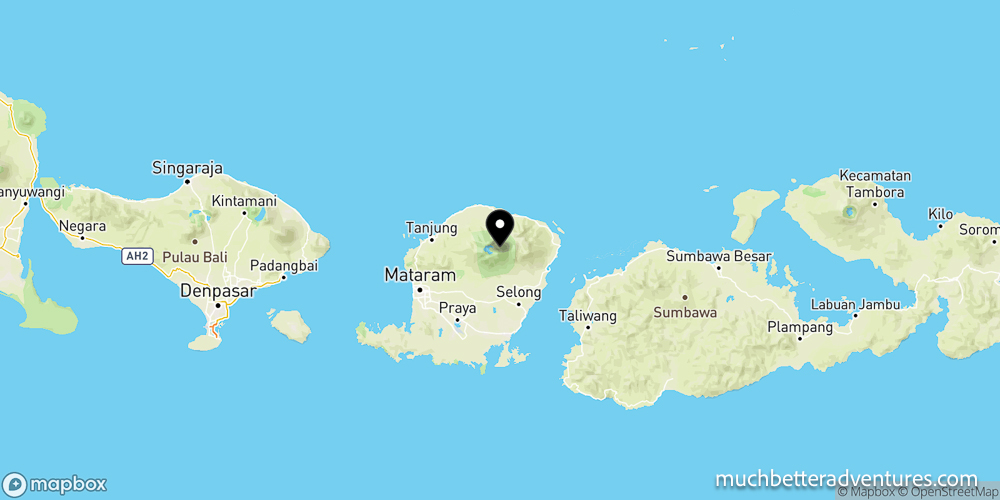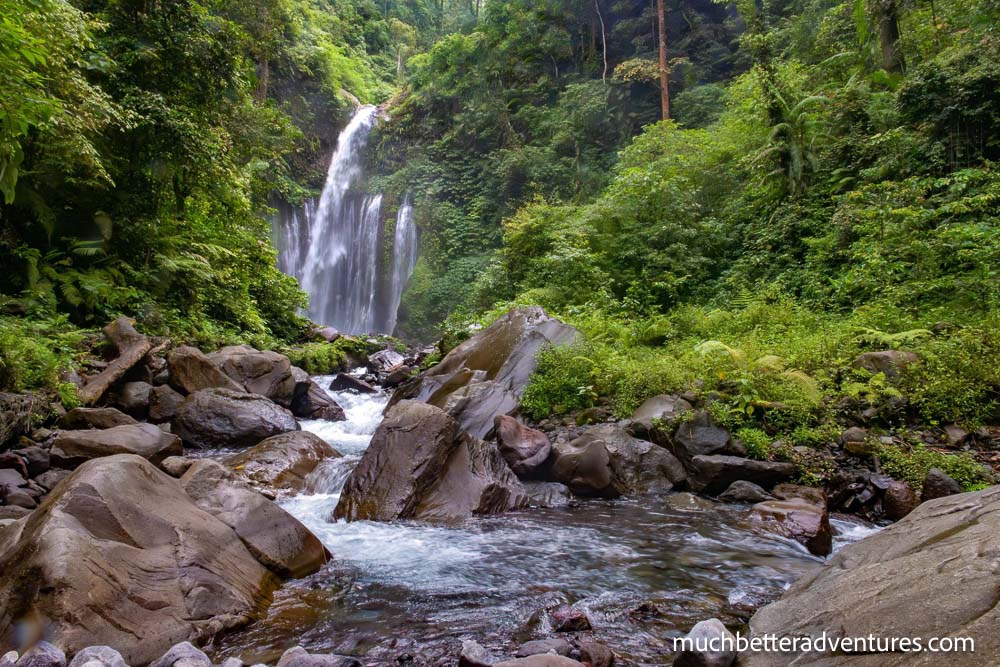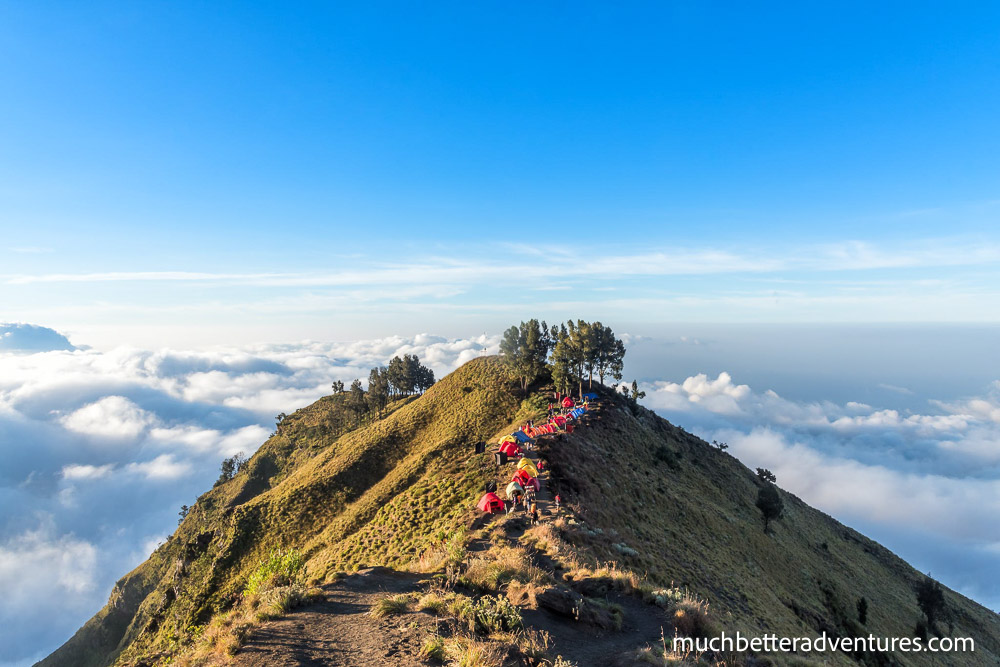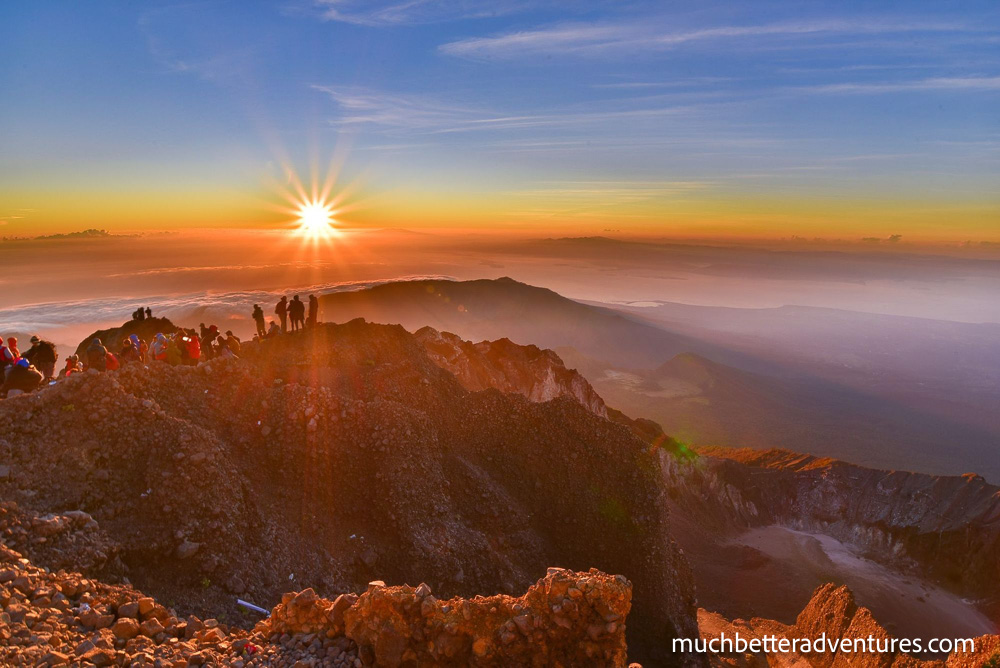Mount Rinjani, towering at 3,726 meters (12,224 feet) on the Indonesian island of Lombok, is a formidable challenge for even the most seasoned hikers. Drawing from the experiences and insights of Dani Redd, Deputy Editor of Much Better Adventures and author of The Arctic Curry Club, this guide provides essential information for those considering an ascent of this majestic volcano.
An Overview of Mount Rinjani


Located in the northern part of Lombok, Mount Rinjani is part of the Pacific Ring of Fire and is Indonesia’s second-highest volcano. The mountain is revered by locals, who consider it a sacred place where their gods reside. Pilgrimages to Rinjani are common, especially after significant festivals like Ramadan, as it’s believed that everyone should climb it to pray at least once in their lives.
The Challenge Ahead
Climbing Mount Rinjani is not for the faint-hearted. Despite relatively short distances each day, the trek involves steep elevation gains and challenging terrain. Hikers often underestimate the difficulty due to the distances involved. As Yangyang Li, a marketing manager for an Indonesian adventure tourism company interviewed by Dani, explains:
“Sometimes hikers think it will be easy because they normally walk 30 kilometers in a day. But they need to check the elevation—the first day alone involves ascending over 1,000 meters. It’s very tiring.”
The summit hike, though only one kilometer, can take up to three hours due to the loose volcanic ash and sand. Hikers often find themselves sliding back with each step forward, making the ascent both physically and mentally demanding.
Preparing for the Trek
Proper preparation is crucial. Dani emphasizes the importance of being physically fit and mentally prepared. Warm-up hikes, such as climbing Mount Batukaru (2,276 meters) in Bali, are recommended to acclimate to the conditions and build stamina.
Choosing the Route
There are two primary routes up Mount Rinjani:
- Sembalun Route: Starting from the traditional village of Sembalun, this route is preferred for those aiming to reach the summit. It begins with a gentle ascent through savannah grasslands, allowing hikers to conserve energy for the challenging days ahead.
- Senaru Route: Beginning in Senaru Village, this path takes trekkers through dense jungle to the crater rim. It’s popular among those who wish to experience the crater lake and surrounding scenery without necessarily reaching the summit.
Dani, drawing on Yangyang’s expertise, recommends ascending via the Sembalun Route and descending through the Senaru Route. This approach avoids retracing steps and offers a diverse range of landscapes, from savannahs to jungles.
The Trek Itinerary
Day One: Sembalun Village to Sembalun Crater Rim
- Distance: Approximately 7 km (4.3 miles)
- Elevation Gain: About 1,483 meters
- Hiking Time: 6-7 hours


The journey begins with registration at the Mount Rinjani National Park office and a health check. The trail starts with a gentle walk through open savannah, but the heat can be intense, with temperatures between 25-30°C (77-86°F). After lunch at “Pos Two,” the trail becomes steeper, transitioning from grasslands to alpine trees. The final push to the crater rim campsite is challenging, with significant elevation gain over a short distance.
Day Two: Summit Ascent and Descent to Senaru Crater Rim
- Distance: Approximately 6.5 km (4 miles)
- Elevation: Gain of 1,087 meters to the summit; descent of 1,265 meters
- Hiking Time: 10-11 hours


An early start at around 3 a.m. is essential to reach the summit by sunrise. The terrain is rocky and sandy, making the ascent arduous. Temperatures can drop to 5°C (41°F), and strong winds are common. Reaching the summit offers breathtaking views, including the sight of Mount Agung on Bali and the turquoise Segara Anak Lake within Rinjani’s crater.
After descending back to camp for breakfast and a rest, hikers proceed to Segara Anak Lake. The descent takes about 90 minutes and provides opportunities to swim in the lake or relax in the hot springs. Depending on the group’s energy levels, they may camp by the lake or tackle the steep ascent to the Senaru Crater Rim campsite, which involves climbing over large rocks and requires the use of hands for support.
Day Three: Descent to Senaru Village
- Distance: Approximately 5.5 km (3.4 miles)
- Elevation Loss: About 1,860 meters
- Hiking Time: 5-6 hours


The final day involves a long descent through varying terrains, including slippery jungle paths. Fatigue often sets in, and hikers may feel as though they’re walking on autopilot. The trek concludes at Senaru Village, where the journey officially ends.
The Importance of a Guide
Climbing Mount Rinjani without an accredited guide is not permitted under national park regulations. Guides ensure safety, navigate the challenging terrain, and provide valuable knowledge about the environment and local culture. Organized treks also include porters who carry camping equipment and food, allowing hikers to focus on the climb.
Accommodation on the Mountain
Trekkers camp at designated sites along the route, typically at the crater rims. While it’s wild camping, porters set up tents and provide comforts like blow-up mattresses. Expedition cooks prepare meals to keep energy levels high. Private toilet tents are a key amenity, as there are no facilities on the mountain.
Best Time to Climb
The optimal time to climb Mount Rinjani is during the dry season, from April to the end of October. The mountain is closed during the rainy months due to slippery and dangerous conditions. Peak periods, such as July and August, see increased foot traffic, and permits may be limited to 400 climbers per day. Booking in advance and providing passport details early is crucial during these times.
Packing Essentials
Packing appropriately is vital due to significant temperature fluctuations:
- Clothing:
- Thermal tops and long johns for cold nights
- Light waterproof jacket and trousers
- Warm fleece jacket
- Worn-in hiking boots
- Sun hat, sunglasses, and sunscreen
- Gear:
- Hiking daypack (30-40 liters)
- Sandals or light shoes for camp
- Headlamp or torch for early starts
- Swimming attire for the hot springs
- Other Essentials:
- Personal toiletries
- First-aid kit
- Snacks and energy bars
Consulting with the trek provider for a comprehensive packing list is recommended.
Getting There
Mount Rinjani is accessible via Lombok International Airport, with direct flights from major cities in Indonesia, Malaysia, and Singapore. From the airport, it’s approximately a two-hour drive to Sembalun Village. Many travelers combine the Rinjani trek with a visit to Bali, using a fast boat service that connects Bali to Lombok in about 90 minutes.
Environmental and Cultural Considerations


Respecting the mountain’s sacred status and preserving its natural beauty is paramount:
- Leave No Trace: Carry out all rubbish and avoid littering.
Wildlife Protection: Do not harm or disturb animals. - Cultural Sensitivity: Respect local customs and avoid loud disturbances.
- Fire Safety: Open fires are prohibited; follow guidelines provided by guides.
Final Thoughts
Mount Rinjani offers a unique and challenging adventure that rewards hikers with unparalleled views and a profound sense of accomplishment. Through Dani Redd’s detailed account and expert advice, prospective trekkers can prepare adequately for this demanding journey.
Are you ready to take on Mount Rinjani? With proper preparation, respect for local customs, and a spirit of adventure, climbing this iconic volcano can be one of the most memorable experiences of your life.







